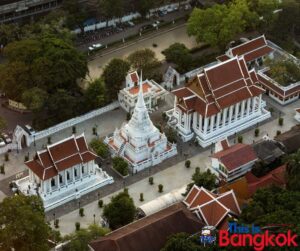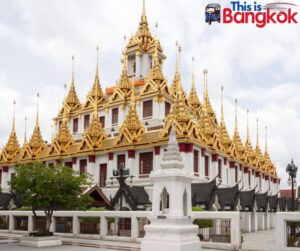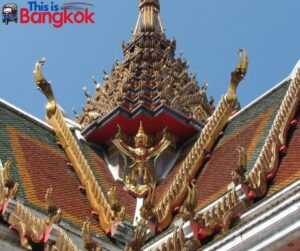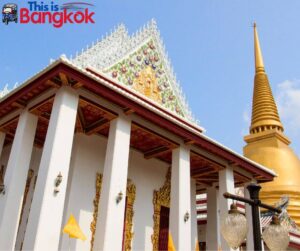Wat Arun (Temple of Dawn)
Wat Arun, also known as the Temple of Dawn, is one of Bangkok, Thailand’s most iconic and beautiful landmarks.
It is a Buddhist temple located on the Chao Phraya River’s west bank in the city’s Thonburi district.
Wat Arun’s distinctive prang (spires) adorned with colorful porcelain tiles make it a prominent and easily recognizable structure on the Bangkok skyline.
Here are some key facts and details about Wat Arun:
History:
Wat Arun’s history dates back to the Ayutthaya period when it was initially called “Wat Makok.” It was later renamed “Wat Chaeng” when King Taksin the Great moved the capital of Thailand to Thonburi.
The temple underwent significant renovations during the reign of King Rama II in the early 19th century, giving it its current iconic appearance.
Architectural Style:
The central feature of Wat Arun is its central prang, or tower, which stands around 70 meters (230 feet) tall.
The prang is intricately decorated with seashells and bits of colorful Chinese porcelain, creating a stunning mosaic. It represents Mount Meru, the center of the world in Buddhist cosmology.
Surrounding Structures:
The prang is surrounded by four smaller prangs and a courtyard with statues of Chinese soldiers and animals, which are said to guard the temple.
You can also find various sculptures and artwork depicting scenes from Thai mythology and history throughout the temple complex.
Climbing the Prang:
Visitors can climb the central prang via a steep and narrow staircase. Climbing to the top offers breathtaking views of the Chao Phraya River and the Bangkok skyline.
However, be prepared for a somewhat challenging ascent and descent.
Opening Hours and Entrance Fee:
Wat Arun is open daily from early morning until late afternoon, and the entrance fee is 100 THB.
Dress Code:
Like many Buddhist temples in Thailand, Wat Arun enforces a dress code that requires visitors to dress modestly.
This means covering your shoulders, knees, and ankles. If your attire doesn’t meet these standards, you may need to rent or borrow clothing at the entrance.
Location:
Wat Arun is located on the Thonburi side of the Chao Phraya River, directly opposite the Grand Palace and Wat Pho.
You can reach it by taking a riverboat from various piers along the river or by crossing the river via the Taksin Bridge.
Wat Arun is a place of worship and a significant cultural and historical attraction in Bangkok.
Its stunning architecture, serene ambiance, and scenic location make it a must-visit destination for tourists exploring the city’s rich heritage.
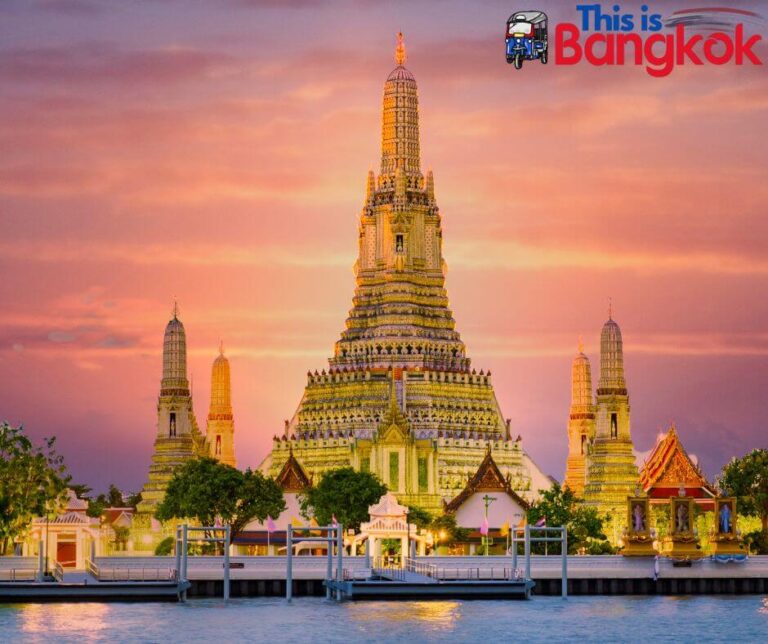
| Attribute | Details |
|---|---|
| Name | Wat Arun (Temple of Dawn) |
| Location | Thonburi district, Bangkok, Thailand |
| Nickname | Temple of Dawn |
| History | Dates back to the Ayutthaya period, Renovated in the 19th century |
| Architectural Style | Distinctive central prang adorned with colorful porcelain tiles |
| Surrounding Structures | Four smaller prangs, sculptures, and artwork |
| Climbing the Prang | Visitors can climb the central prang for panoramic views |
| Opening Hours | Daily, early morning to late afternoon |
| Entrance Fee | Typically, around 100 Thai Baht for foreigners. Free for Thai citizens |
| Dress Code | Modest attire required, covering shoulders, knees, and ankles |
| Duration of Visit | A few hours, including exploring and climbing |
| Significance | Cultural, historical, and religious landmark |
| Transportation | Accessible via riverboat or Taksin Bridge |
| Age | Several centuries with significant renovations in the 19th century |
Why is Wat Arun called the Temple of Dawn?
Wat Arun is named after the Hindu god Aruna, often associated with the dawn.
The temple’s name reflects its location on the banks of the Chao Phraya River, where it beautifully reflects the morning light.
How much does it cost to go to Wat Arun temple?
The entrance fee for foreign tourists is typically around 100 Thai Baht. You also get a water bottle with your ticket!
Is Wat Arun worth visiting?
Yes, Wat Arun is worth visiting. It’s one of Bangkok’s most iconic landmarks, renowned for its stunning architecture and cultural significance.
Why is Wat Arun so famous?
Wat Arun is famous for its intricate and beautiful architecture, particularly its central prang adorned with colorful porcelain tiles. It’s also known for its historical and religious significance in Thai culture.
Is there a dress code for Wat Arun?
There is a dress code at Wat Arun, as is common at many Thai temples.
Visitors should dress modestly, covering their shoulders, knees, and ankles.
If needed, clothing can often be rented or borrowed at the entrance.
How old is Temple of Dawn?
Wat Arun has a long history, dating back to the 17th century.
However, it underwent significant renovations and took its current form during the reign of King Rama II in the early 19th century. So, it has a history spanning several centuries.
How to get from Wat Pho to Wat Arun?
Ahoy, temple-hopping traveler! Here’s your treasure map from Wat Pho to Wat Arun: First, make like a monk and stroll towards Tha Tien pier. Exit Wat Pho through the reclining Buddha’s exit, hang a left, dodge a few tuk-tuks, and voila!
You’ll arrive at Tha Tien Market. Now, navigate this bustling bazaar like a fearless explorer, and what do you find? A pier! And what’s cooler than a pier? A ferry is waiting to whisk you across Wat Arun.
Arrr, it’s time for an adventure on the high seas… well, the Chao Phraya River, at least!
Address:
- 158 Thanon Wang Doem, Wat Arun, Bangkok Yai, Bangkok
Contact:
Opening Hours:
- Daily: 8:00–18:00
Entrance Fee:
- 100 baht
- Buy tickets here

